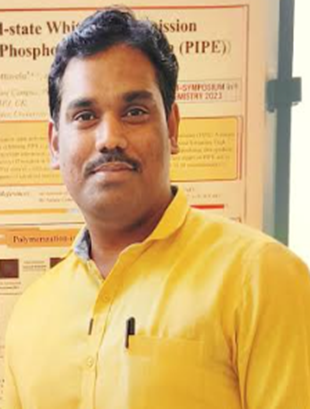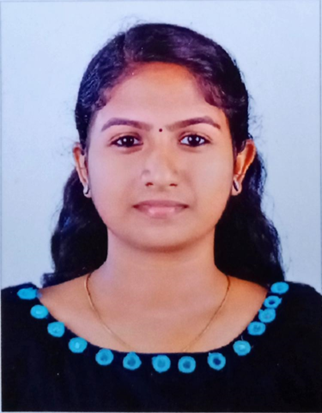Photoluminescent Materials And Their Applications
We are working on real-world applications of photoluminescent materials, usually (but is not restricted to) in explosive sensing in the vapor phase, biomolecule sensing, cell imaging and theranostics, pressure sensing, Iridium-based complexes, and thermally-activated delayed fluorescent molecules for organic light-emitting diodes (OLEDs) to contribute to society and science.
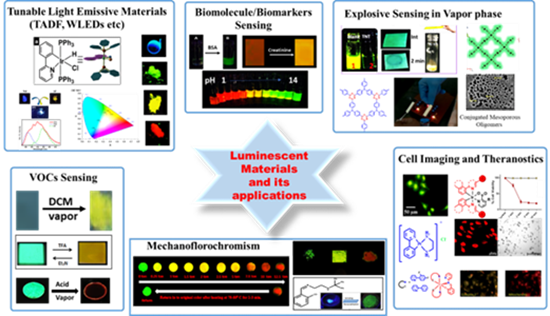
Sensing Materials-
In recent times, homeland security has become paramount due to the increasing terror threat. Terrorists amply use nitro-based explosives, but their existing sensing techniques are costly, and portability could be better. Fluorescent materials pave the way to overcome these challenges by being cost-effective and can be easily modified into portable devices. Our group has synthesized luminescent molecules which are highly sensitive and selective towards nitro explosives. We have tested a few materials on the field and were able to trace parts per billion to trillion levels of vapors. We have engineered a prototype portable device that is in the progress of becoming a mobile-ready device and can be used at public checkpoints, border areas, etc., to detect explosives.
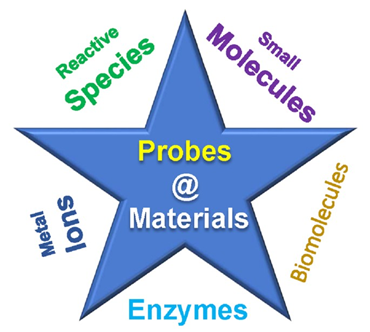
Thermally activated delayed fluorescence (TADF)-
Second-generation light-emitting diodes (LEDs) could be more efficient and extravagant, due to which their full potential in electronic displays, solar cells, etc., is yet to be realized. Third-generation LEDs are made of thermally activated delayed fluorescent (TADF) molecules that are both efficient and cost-effective. With the increasing energy demand, their use in solar cells for renewable energy harvesting is paramount. Hence TADF molecules become of principal importance as they are highly efficient compared to traditional fluorescent molecules. Our group is synthesizing highly efficient TADF molecules that can give luminescence for a long time and have plans to fabricate them into devices.
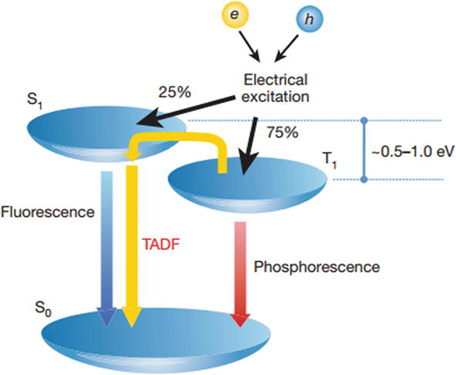
Metal-based white light emitting materials (WLED)-
Traditional White LEDs (WLEDs) lack color purity as two colors are combined (doped) to get white light and lack efficiency. In contrast, Iridium based WLEDs are pure and highly efficient, making them excellent candidates for white light applications, including multilevel information encryption, polychromatic screen printing, and volatile organic compound detection. We had developed Iridium based polymers that emit white light without doping, giving a very pure color. We are also developing a two-metal-based white emitting compound expected to have high purity and a long lifetime.
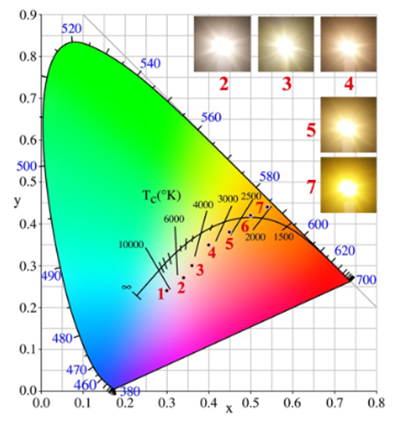
Fluorescent Biomarkers-
The study of biomolecules is essential to analyze living beings, while that of biomarkers is vital to medicine for diseases. Chronic kidney disease (CKD) is prominent in India, with around 71 million cases. The predominant cases are from rural areas as the cost of tests is high and lacks accuracy at an affordable price. Our group is developing a luminescent molecule that will detect bovine serum albumin (BSA) and creatinine that helps detect CKD by using urine as a sample. We are also engineering a device that will be cheaper, reusable, and easily portable for use in the country’s remotest areas.
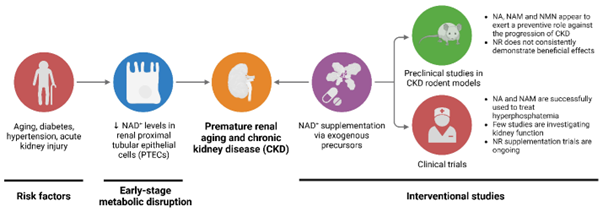
Photosensitizers for Photodynamic and Photothermal Therapy (PDT and PTT)-
Cancer is a predominant menace, and its existing radio and chemotherapy treatments should be avoided as cancer cells develop resistance against them. We have developed an Iridium-based molecule that combines photodynamic and photothermal effects against which cancer cells offer little to no resistance. Iridium is biocompatible and is not harmful to humans at lower concentrations. Our molecule is sensitive and requires very low-concentration doses, making it an exceptional candidate for cancer therapy detection. We recently encapsulated the AIE non–water soluble Pt(II) complex into mesoporous silica nanoparticles for cancer theranostic application. We have utilized the excimer emission of the pyrene-based small molecule for the selective detection of picric acid (explosive) up to parts per trillion (ppt) level. The Iridium phenanthroline mono-cyclometalated complexes were utilized to sense various organic solvent vapors. We have found reversible mechanoluminescence in the simple organic molecule, which will be utilized for stress and stretch sensing materials.
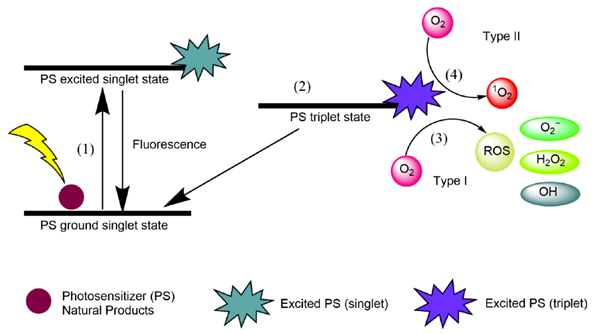
Iridium Based Aggregation-Induced Emission (AIEgens)-
Heavy metal complexes, especially Ir(III) & Pt(II) are a well-known and efficient class of triplet-emitting materials to achieve high internal quantum efficiency. They are renowned for their potential applications in the fields of organic light-emitting diodes (OLEDs), bioimaging, chemosensor, stimuli-responsive and vapoluminescent materials because of their superior photophysical properties, long luminescence lifetimes (100 ns to micro s) high quantum yields and significant Stokes shifts (hundreds of nm). We have demonstrated a convenient route for synthesizing a new series of Aggregation-Induced Enhanced Emission’ (AIEE) active Ir(III) Schiff base complexes with facile color tuning and CO2.
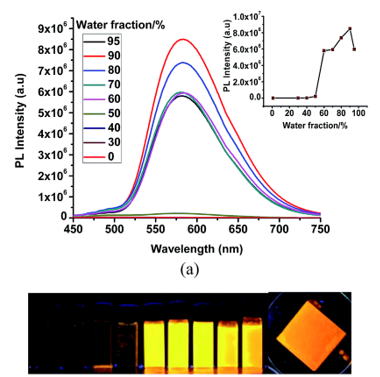
Polymer Based AIEgens-
Polymeric AIEgens (Conjugated & non-conjugated linkage) are promising materials for applications in various areas such as PLED, bioimaging, plastic laser, and chemosensor. Polymers are good candidates for PLED application compared to small molecules due to their unique film-forming ability and high thermal stability. We have synthesized various linear & hyperbranched highly luminescent AIE polymers and utilized them in applying PLED, explosive sensing, and bioimaging. Recently, we have developed a distinct responsive multi-stimuli oligomeric tool, i.e., quenching towards TNT explosive sensing, bathochromically shifted emission for acidochromism, hypsochromically shifted emission against mechanofluorochromism behavior and polarity dependent emission observed for solvatochromism.
Near-Infrared AIEgens-
Most AIE luminous are blue or green emissive, and only a few emit red light. However, red and near-infrared (NIR) emissive AIE active materials are important in full-color display and bioimaging. As one of the three primary colors, red is an indispensable element in full-color display systems (white emissive). Besides their application in optoelectronic devices, red/NIR-emitting materials are promising fluorescence probes in biology due to their large penetration depth, faint background auto-fluorescence, and trivial irradiation harm to cancer cells.


 An Institute of Eminence
An Institute of Eminence




















